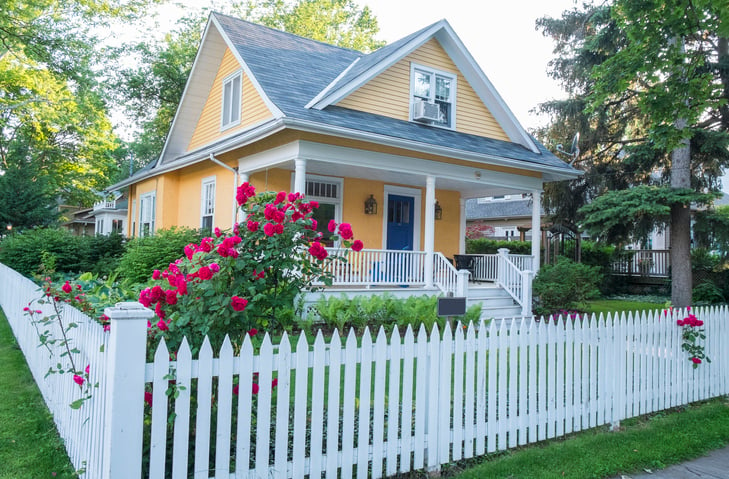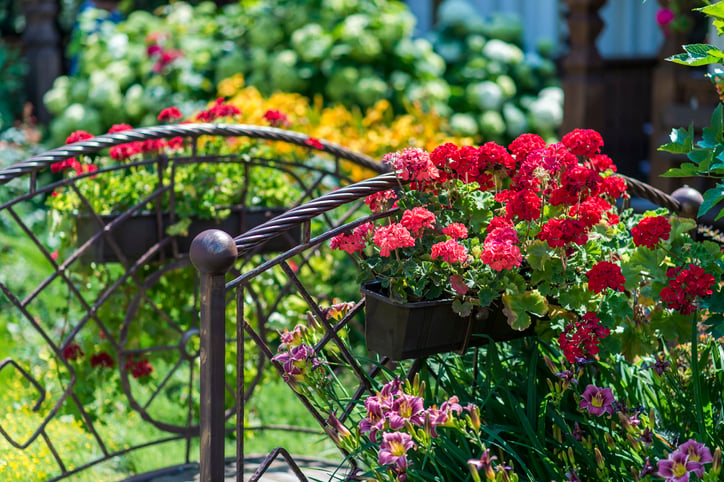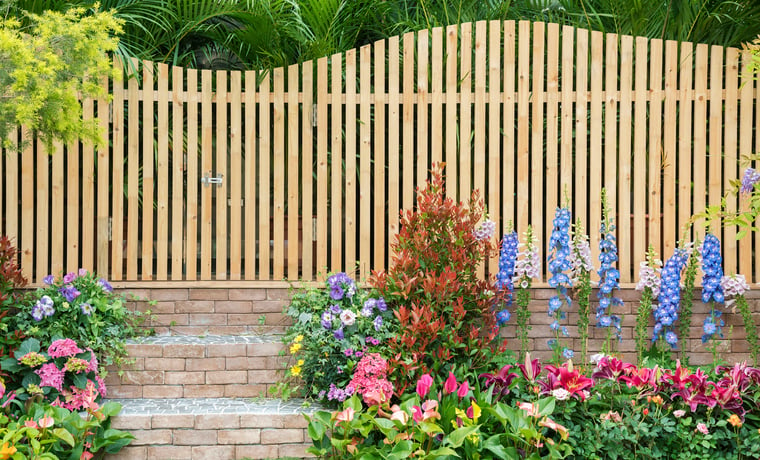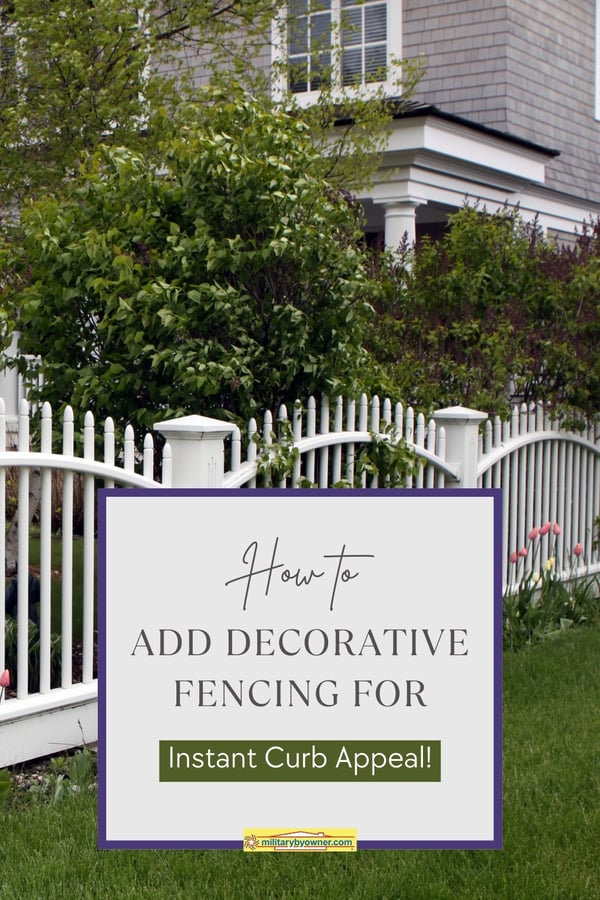Add Decorative Fencing to Your Home for Instant Curb Appeal!
When homeowners think of installing a fence, it's usually because they’re trying to keep children and pets inside the yard or they’re hoping to prevent pests or intruders from entering. However, they’re probably not thinking about the aesthetics of fencing and how it can bump up the property’s curb appeal and secure the yard.
Decorative fencing is a landscaping component that homeowners often overlook either because of cost or because an existing and functional perimeter exists, however unsightly. Depending on the overall vision a homeowner has for their property, decorative fencing can provide both utilitarian uses as well as visual appeal when it comes time to sell your home.
Before starting with the fun part of choosing the style and color of a fence, find out local and neighborhood rules about installing a fence. An incorrect fence placement could end up in a second install or, worse, a property line lawsuit.

Photo from iStock.com/Chiyacat
What’s the Fence’s Function?
The first step is to determine the decorative fence’s function. Whether or not it's pulling double duty by providing privacy and visual interest or simply one or the other is the question. The materials and style of fencing each play a role in determining the best option. The fencing cost is generally calculated by the length needed plus labor fees. Pre-made selections are more cost-effective but don’t always provide the custom look some homeowners crave.
Choose the Material Wisely
Research fence materials before purchasing to ensure they’re suitable for the project. Consider the home’s exterior style, the local climate, budget, function, and maintenance level; they’re all important factors. Materials used to construct decorative fencing vary widely and are only limited by imagination and budget.
Popular choices include:
- Vinyl
- Wrought Iron
- Steel and Aluminum
- Wood
- Bamboo
- Brick and Stone
Some materials, such as vinyl and rust-proof aluminum, require very little maintenance. Painted or stained wooden picket fencing requires more hands-on attention due to rapid weathering. Love Home Designs has a beautiful collection of the many decorative fencing choices available.
More inspiration for adding curb appeal: 4 Landscaping Ideas for Instant Curb Appeal.

Photo from iStock.com/posonsky
Don’t Forget Fence Accessories
Decorative fencing also gets a boost of charm by adding accessories. Prevalent options include intricate gates, pergolas, and arbors. Each injects a focal point needed in a garden or sophisticated landscape style. Brickwork in walkways also complements decorative fencing.
Simple Upgrades
A simple stake type of decorative fencing is perfect for corners and defining edges of gardens or walkways. They are inexpensive and reusable in various locations year after year.
Soften White or Natural Wood
It’s often noted that bright white fencing may look too stark, especially if made of vinyl. An easy way to warm the space is to add climbing plants. The softened fence features have a more natural appeal. Fencing also benefits from hanging pots, window boxes, vertical gardens, and seasonal garden art.
Natural wood is eye-catching, especially if well-maintained and treated to combat the weather. Natural wood emphasizes nature’s exterior and tends to blend in better with the surroundings, but it requires upkeep, whether stained or painted. 
Photo from iStock.com/LeeYiuTung
DIY or Professional Installation?
There are DIY opportunities for fencing installation, although experience will make this task easier. Most fencing requires digging and pouring concrete for posts. Professionals make quick work of installation and will likely provide better results than first-timers, especially if solid steel or cast iron is the choice of material.
Here’s a quick installation tip from a pro that you might not have thought of:
“It's customary to build your fence so that the finished side faces outward. This gives your neighbors a more pleasant view and also helps keep the exterior of your house looking great from the road. If you want to see a finished side on the inside of your yard, then look for a fence design that has two finished sides.”
Decorative fencing makes a considerable statement in the overall look of a home’s landscape, whether for your own enjoyment or future house selling purposes. Pay attention to detail in both lawfulness and construction before you take this step.
Planning to sell your home? MilitaryByOwner has more information about preparing yards and property for an open house.
 Main photo from iStock.com/mirsad sarajlic
Main photo from iStock.com/mirsad sarajlic





